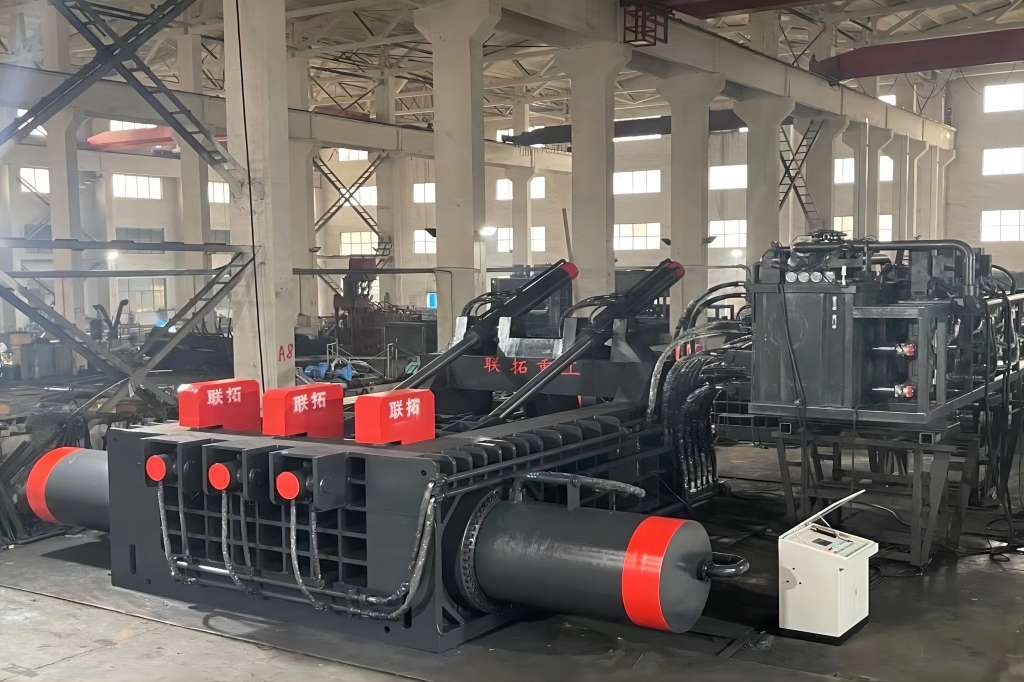When dealing with metal recycling, processing, and waste management, both metal baler machines and metal shear machines offer distinct advantages, depending on your operational goals.
This article will outline the pros and cons of each machine to help you decide which best suits your business needs.
Metal Baler Machine

A metal baler machine is primarily used to compress large amounts of scrap metal into compact bales, making storage, handling, and transportation easier and more cost-effective. It is widely used in recycling plants, scrap yards, and metal processing facilities that handle substantial volumes of waste.
Advantages
1. Space-saving: Metal balers significantly reduce the volume of metal waste, allowing for easier storage and reduced space requirements in facilities.
2. Lower transportation costs: By compacting scrap metal into dense bales, transportation becomes more efficient, reducing the number of trips required and lowering fuel and logistics costs.
3. Environmentally friendly: Facilitates the recycling process by making metal waste more manageable, thus contributing to reduced landfill use and environmental impact.
4. Increased safety: Neatly compressed bales reduce clutter, making facilities safer and more organized.
Disadvantages
1. High initial investment: Metal baler machines can be costly to purchase and install, making them a significant upfront investment for businesses.
2. Maintenance and operation costs: These machines need to be operated by qualified personnel and require regular repair, which raises long-term operating costs.
3. Not ideal for cutting: A metal baler compresses metal, but it does not cut it into smaller pieces, which may be necessary for some recycling or processing tasks.
Metal Shear Machine

Metal shear machines are designed to slice large metal materials, such as rods, sheets, and beams, into smaller, easier-to-handle pieces. They are commonly used in demolition, metal fabrication, and scrap processing industries.
Advantages
1. Precision cutting: Metal shear machines are designed to cut metal into specific sizes, making them highly useful in metal fabrication and recycling processes where exact dimensions are needed.
2. Versatility: These machines are equipped to work with a diverse array of metal materials, including steel, aluminum, and copper, and can manage different thicknesses and dimensions.
3. Time-efficient: Metal shear machines allow for quick and efficient cutting of large volumes of metal, increasing productivity in industrial settings.
4. Durable and robust: Metal shear machines are built to handle heavy-duty materials and processes, making them reliable in tough working conditions.
Disadvantages
1. Limited compression: While they are excellent for cutting, metal shear machines do not compress or reduce the volume of metal waste, leading to higher transportation and storage costs for bulky scrap.
2. High energy consumption: Metal shear machines often require significant power, particularly when cutting through thicker or harder metals, contributing to higher energy costs.
3. Potential for safety risks: If not operated correctly, metal shearing can be hazardous, requiring strict safety protocols and well-trained operators to avoid accidents.
Conclusion
The choice between a metal baler machine and a metal shear machine ultimately depends on the specific needs of your operation.
If your primary goal is to reduce the volume of scrap metal for easier handling, storage, and transportation, the metal baler machine is the ideal solution. On the other hand, if precision cutting of metal materials is essential to your business, then the metal shear machine will serve you better.
By thoughtfully weighing the benefits and drawbacks of each machine, you can make a well-informed decision that fits your production goals, financial plan, and operational needs.




